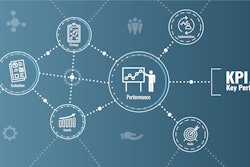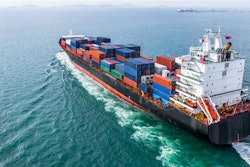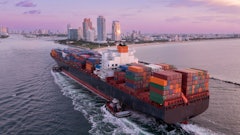
*This article is sponsored by MEP National Network™*
Now more than ever, manufacturers see reshoring as a more attractive option as they continue to deal with rising transportation costs, bottlenecks at ports and uncertainties about lead times and material availability. The reshoring movement is being driven by an increased emphasis on supply chain resiliency. Bringing manufacturing closer to home reduces risks and improves responsiveness.
Reshoring can solve problems, lower costs, provide a greener solution and create jobs. Conceptually, it makes sense. Yet the thought of reshoring some or all of the supply chain can be intimidating for a small or medium-sized manufacturer (SMM) lacking supply chain expertise.
How to Get Started in Your Reshoring Evaluation
The best way to begin evaluating the case for reshoring is to go back to why the decision was made to move the supply chain offshore. Dust off the presentations and pull those Excel files from the archives to answer these questions:
- What initially drove the decision to offshore?
- What has changed since then?
- If you used current data with the same criteria, would the evaluation yield the same recommendation?
- What have been the positive results of this move?
- While recent challenges have magnified the disadvantages of offshoring, when was the offshore supply chain working well and why?
- Are there reshoring disadvantages that should be evaluated?
There is a reason that reshoring hasn’t been seriously considered until now. Once you understand why the supply chain went offshore in the first place, you must quantify the current problems you are trying to solve. Reshoring should not be a solution in search of a problem. Clearly define the issues you want to resolve and evaluate whether reshoring is the most effective approach.
Questions to guide your decision-making should include:
- What components or processes are causing the most disruption?
- How will reshoring address the problems and provide a more workable solution than the current supply chain?
- Are there alternative solutions to reshoring that might be equally or more effective?
Focus on a few key starting points to research and analyze the advantages and disadvantages of reshoring, while conserving your valuable resources and giving your team the information they need to make strategic decisions.
Total Cost of Ownership Is a Key Driver of Reshoring Decisions
Ultimately, the Total Cost of Ownership (TCO) drives many reshoring decisions. TCO is the sum of all visible and hidden costs associated with the acquisition, transportation, storage, finance, transactions and environmental impacts of every activity of the supply chain. Knowing your TCO helps clarify risks and provides a structured approach for optimizing your supply base and improving your overall value.
Historically, while overseas outsourcing initially offered significant cost advantages, many factors have eroded those benefits. For example, while labor costs in Asian countries were initially significantly lower than those in Western countries, they have steadily increased over the years. Currency issues and tariffs have also led to higher prices. Meanwhile, global trade tensions, geopolitical uncertainties, and other factors such as the COVID-19 pandemic have led to more uncertainty and costly disruptions.
To make informed reshoring decisions, manufacturers must carefully evaluate the TCO of their supply chains and consider a range of factors, including labor costs, shipping costs, currency fluctuations, quality control, intellectual property protection, supply chain complexity and visibility, and environmental and social responsibility.
Areas of Your Operations to Include in Reshoring Evaluations
Shipping and storage costs are obvious starting points, but there are other areas you should evaluate when determining if reshoring is right for your business. Reshoring in many respects is no different than any other organization-wide project. You need to consider your people, processes, and technology. Be sure to account for these three areas.
1. Supply Chain Technology
Evaluate your current supply chain technology and determine how it can be leveraged to support reshoring. One example of how technology has become the backbone of the supply chain industry is AI. AI-powered tools can analyze vast datasets to improve sales and operations planning, predict demand more accurately, identify and mitigate potential risks, and optimize inventory levels while enhancing supplier relationships through data-driven insights and collaborative platforms.
However, if you still have your supply-chain data in Excel files downloaded from an ERP system, build a visual of these siloed Excel datasets and determine your starting point, then ask these questions:
- Will the technology and data you are using to support offshore suppliers have to change in some way to provide the supply chain visibility you need for reshoring?
- Can you leverage the suppliers’ technology and/or integrate it with yours easily?
- What benefits would there be to implementing new technology?
- Does your team have the bandwidth to take on a new technology implementation right now?
2. Performance Analytics
Have your analytics changed over time to keep up with the global supply chain evolution? If not, this needs to be addressed before making any final recommendations regarding the solution to your current supply chain problems. These questions can help get you started:
- How are you measuring your supply chain? If your supply chain focus defaults to pricing or delivery, you may be taking on additional risk if your suppliers begin cutting corners. Quality must be maintained and not allowed to decline.
- Are you considering all parts of the landed cost equation?
- Are you factoring in cost predictability, possible import tariffs, carbon offset costs, or what you may have to spend to react to a late or canceled delivery?
3. Management Structure
Assess your overall supply chain management and team bandwidth, strengths, and weaknesses. You will need to ask questions like:
- What is your supply chain management organizational structure and how would it need to change with reshoring?
- Does your team have the resources they need to establish new suppliers and ensure these suppliers’ success?
- Is your current team’s environment one in which the challenges of major supply chain changes can be openly discussed, measured, and acted upon?
Reshoring Is an Opportunity to Build Value-Driven Relationships
When defining your team's role within the new supply chain ecosystem, carefully evaluate potential partnerships with suppliers. These partnerships can significantly enhance your team's capabilities, effectively expanding its reach. Furthermore, they provide a direct and immediate connection to your most crucial suppliers.
Reshoring will require you to build a resilient domestic supply chain, which isn’t just about meeting immediate needs but fostering innovation, improving efficiency, and mitigating risks through effective relationships. To capitalize on reshoring opportunities, shift your focus from solely seeking the lowest cost per unit to prioritizing strategies and relationships that offer long-term value. This is a chance to find vital partners who will collaborate with you in areas such as:
- New technology adoption
- Product enhancements
- Flexible manufacturing and customization
Supplier relationships thrive when partners work together on strategic initiatives, such as testing new processes and developing cost-saving approaches. Look for suppliers who are eager to approach problem-solving and challenges as a team by encouraging open communication.
Contact Your Local MEP Center for Expert Guidance on Reshoring
A reshoring plan requires extensive work but has substantial benefits that can help your company achieve long-term success. Expert guidance is available through your local MEP Center and the MEP National Network™, offering resources to help manufacturers navigate the reshoring process.












![Pros To Know 2026 [color]](https://img.sdcexec.com/mindful/acbm/workspaces/default/uploads/2025/08/prostoknow-2026-color.mduFvhpgMk.png?ar=16%3A9&auto=format%2Ccompress&bg=fff&fill-color=fff&fit=fill&h=135&q=70&w=240)




